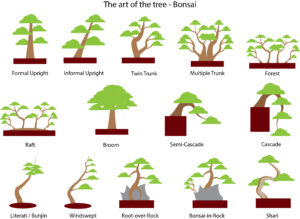
The house of the Spongebob – pineapple
Pineapple is neither pine nor apple but is a monocot plant that is also a herbaceous perennial. Scientifically referred to as Ananas comosus, pineapple is a native species of southern Brazil and Paraguay area, where the wild relatives are found, the pineapple was firstly domesticated by the Indians and carried up through South and Central America to Mexico and the West Indies long before the arrival of Europeans. The pineapple was praised by early European […]
Read More
Kokedama – the Japanese art
Modern green has become interesting when it is not about potting a plant in a pot but designing a miniature landscape such as a terrarium, bonsai, as well as kokedama. Kokedama is a Japanese word that means moss ball. It is a creative art of creating a display of living color that can be suited for both indoor and outdoor. Generally, it is a ball of soil that is covered with moss for a creatively […]
Read More
The Spleenwort – Asplenium
Asplenium is one of the most popular houseplants in the family of Aspleniaceae which consists of seven hundred evergreen ferns widely distributed around the world. It has a very diverse growth form as the genus includes terrestrial and epiphytic species and the species that grow on the rocks. The variations among the species made the distinct features that differentiate from a species to another species. Some make dense turfs of fronds or rosettes. Others creep […]
Read More
The Japanese art – Bonsai
Bonsai in Japanese means the plant in a pot. Once a luxury for the privileged people or garden centers of specialists, these tiny artistic trees were uncommon curiosities or botanical freaks due to the fine aesthetic design and artistic conception. Not until now, indoor miniature landscaping has been gaining popularity as modern green, which also bring back this ancient art to the general public for everybody who is into this art. Because of the association […]
Read More
Christmas of a desert – Christmas cactus
Christmas cacti are familiar flower shop pot plants. Cacti of this genus, Schlumbergera, are some of the most widely cultivated and enjoyed cacti. It is named to honor Fréderic Schlumberger, an avid French cultivator of cacti and other succulents. It is a tough plant that can grow over a year and it is suitable for Thanksgiving and Easter. This genus consists of six species of bushy cacti that are originated from southeastern Brazil. They gave […]
Read More
Selaginella – False roses of Jericho
Selaginella is an evergreen, rhizomatous perennial in the genus of Selaginella from the family of Selaginellaceae. Generally known as spike moss or arborvitae ferns, mainly found in tropical and warm-temperate zones, Selaginella is highly valued as small ornamental plants that provide a very satisfactory blossom miracle. Although share resemblance with the true rose of Jericho (Anastatica hierochuntica), which is a flowing plant in the family Brassicaceae. They are absolutely botanically unrelated because Selaginella is one […]
Read More
Holly: Frau Holle’s holy tree
Of all the trees that are in the wood, the holly wears the crown! There are four hundred or so evergreen and deciduous trees and shrubs that make up this large genus, which is Aquifoliaceae. Generally, species under this genus are known as holly. They come predominantly from the temperate regions of the northern hemisphere. They are grown for their foliage and produce clusters of small glossy berries. With its shiny green and spiky foliage […]
Read More
Mistletoe – a parasitic plant is the symbol of Christmas
Mistletoes are a diverse group of aerial parasitic plants, particularly obligate hemiparasitic with a worldwide distribution. It is usually found in the temperature forest along the Pacific rim of southern South America. It is a successful and interesting plant that parasitize trees and shrubs, establishing xylem connections with their hosts to obtain water and other xylem-borne nutrients. Mistletoe grows on a range of trees including willow, apple, and oak trees. It is also found on […]
Read More